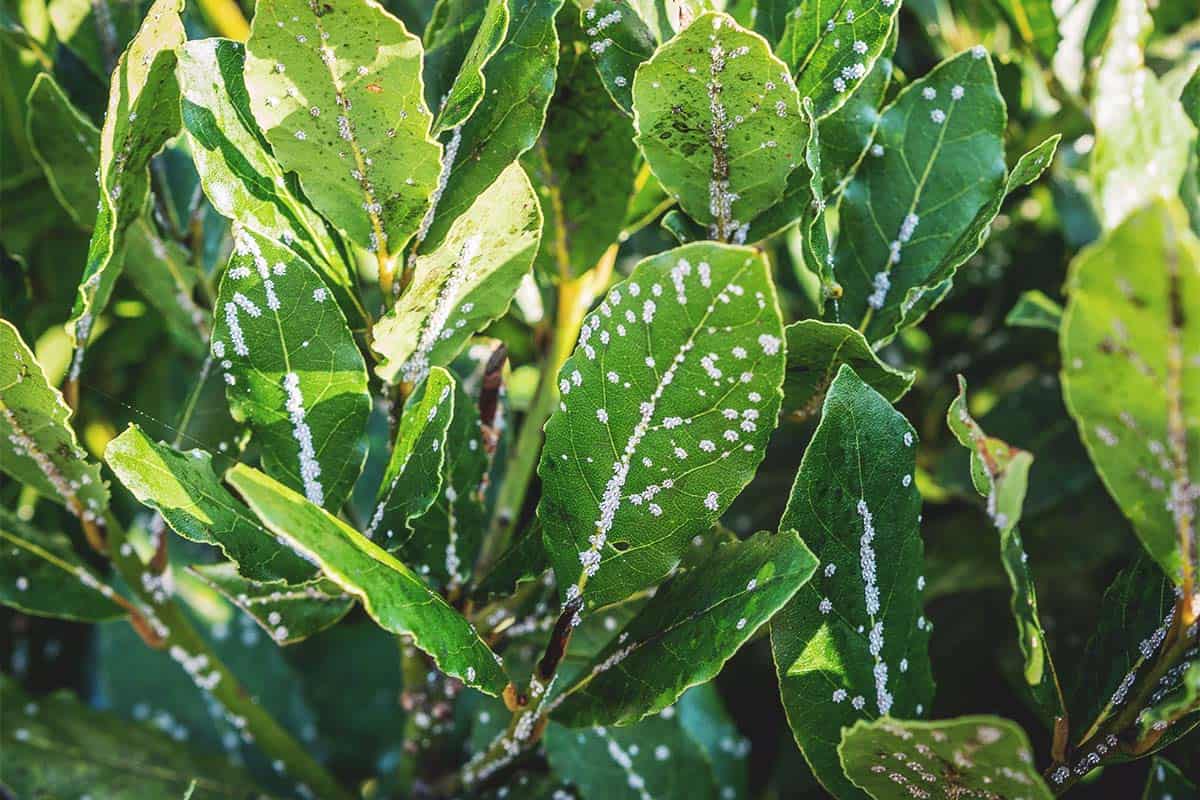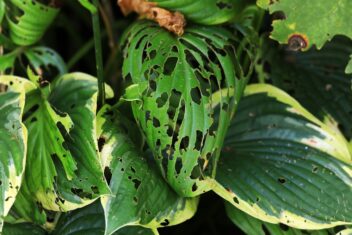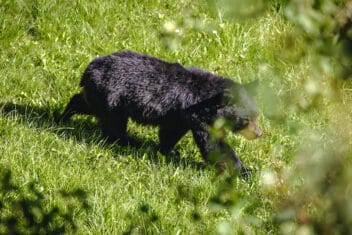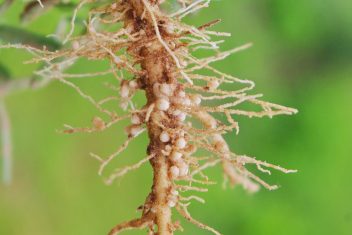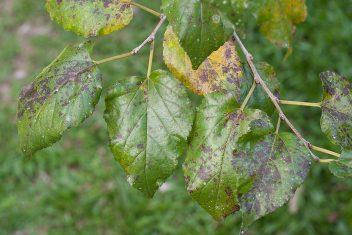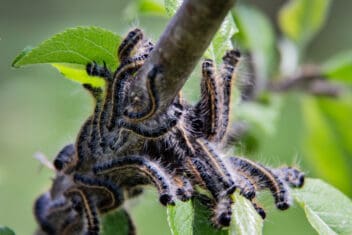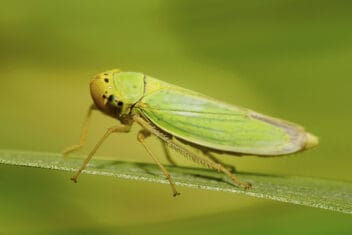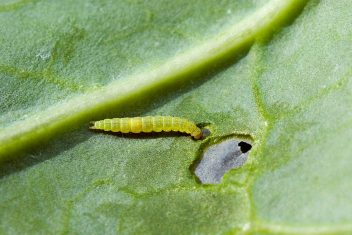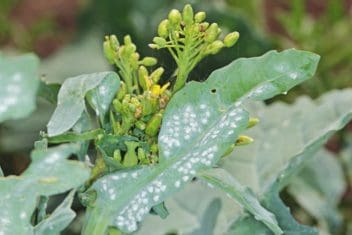For the longest time, I thought scale was a plant disease. Boy, was I wrong! Scale insects are nasty little plant suckers that are relatively common among indoor and outdoor plants and trees.
It’s funny how the tiniest bugs are sometimes the most destructive. I think it’s because they’re often able to multiply quickly, and it’s tough to keep up with their reproduction rates.
How do you combat an enemy that’s tough to spot and multiplies almost right before your eyes? Here’s how to fight scale and banish them from your precious plants.
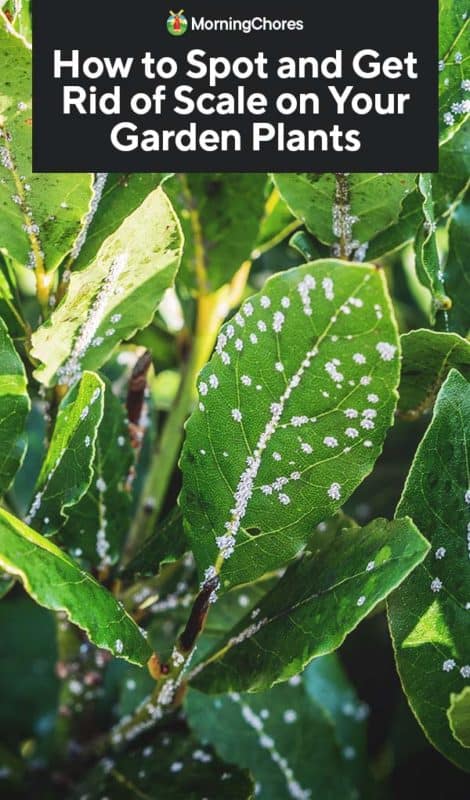
What is Scale?
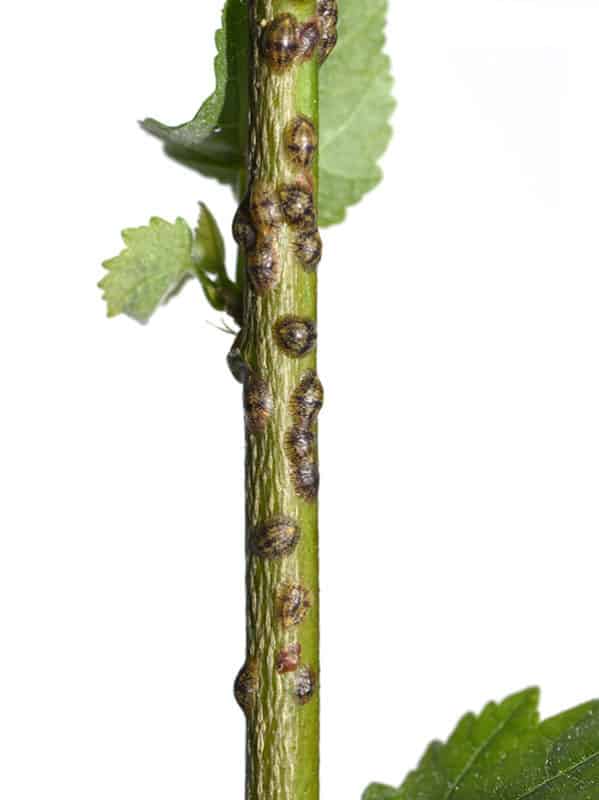
Unlike what some people might think, scale is not the name of a plant disease. Scales are tiny little insects that suck the sap from plants, eventually taking away all of the essential nutrients plants need to survive.
Similar to spider mites, these bugs prefer warm, dry conditions, which is why they’re so common in indoor houseplants. Home interiors are often much dryer than outdoors, and many tropical houseplants necessitate warm, cozy conditions not so easily replicated in an indoor environment.
There are three main types of scale bugs (and thousands of species!), including those with hard and soft carapaces, and mealybugs. All scales are tiny, oval in shape, and tend to be brown in color—but insect color varies significantly depending on the species.
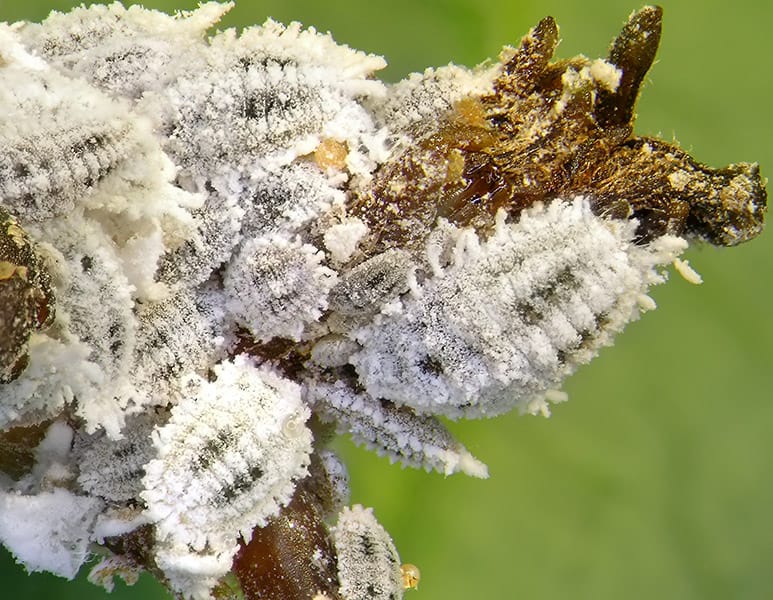
Hard-shelled scales bugs are the most difficult to control once an infestation has begun because they’re protected bodies aren’t as susceptible to sprays and other chemical controls—natural or otherwise.
Scale insects tend to hover around foliage areas where they feast upon plant sap.
The Scale Lifecycle
Female scale insects have a clever egg-laying system that provides them with total protection. They lay their eggs underneath their own bodies, so the eggs are totally sheltered.
While eliminating eggs is one of the best ways you can address many insect pests, it’s not possible with scale bugs. You should target scale insects when they hatch and when the nymph-stage crawlers head out to find appropriate feeing spots.
Scale bugs reproduce rapidly and produce several generations in a season. Reproducing is even easier since females don’t necessarily require males to lay eggs.
Signs of Scale Activity
Scale infested plants won’t appear healthy. They’ll look sick and diseased. Unfortunately, there are a lot of conditions that cause plants to look out of sorts.
If your plants look sickly, it’s time to examine them and do some sleuthing. The first thing to look for is the presence of bugs.
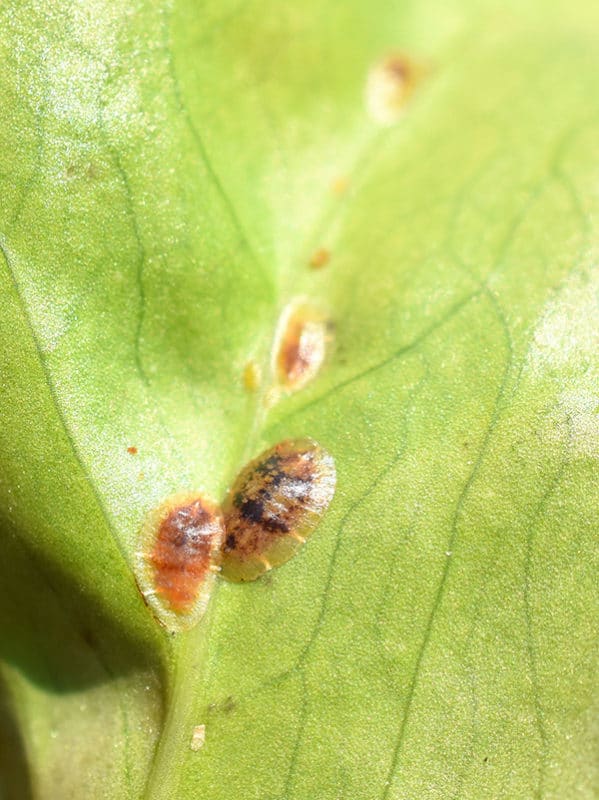
Scale insects hide out on the undersides of plant leaves. Look for small, oval-shaped insects hanging out there. Thankfully, even though the individual bugs are small, it’s tough to miss large clusters of these bugs.
The problem is that the bugs often don’t look like bugs at all, which is why you could mistake them for a disease. The waxy outer shells have the look of a fungus when all the bugs are clustered together.
If you don’t spot bugs or you still aren’t sure, here are a few signs that might indicate a scale infestation:
- Yellowed leaves: Yellowing leaves that start to fall off your plant is a sign that something is afoot.
- Dying branches and falling twigs: Trees affected by scale will often shed whole limbs and appear extremely stressed.
- No new growth on plants: As leaves yellow and fall off, there’s seldom any new growth on scale affected plants.
Why is Scale Bad For My Garden?
The bugs don’t just suck the life from plants, they also spread disease. Some types of scale insects excrete what’s called ‘honeydew’ (clearly not the delicious melon!). This moist substance then encourages mold growth, which further depletes plant health by limiting photosynthesis.
If a scale infestation is not addressed correctly, plants eventually die.
Scale bugs attack a variety of plant life, and different species target different types of plants. Certain scale species, for instance, are more likely to infest trees and shrubs, while others are more comfortable making a feast out of common houseplants.
How to Deal with a Scale Infestation
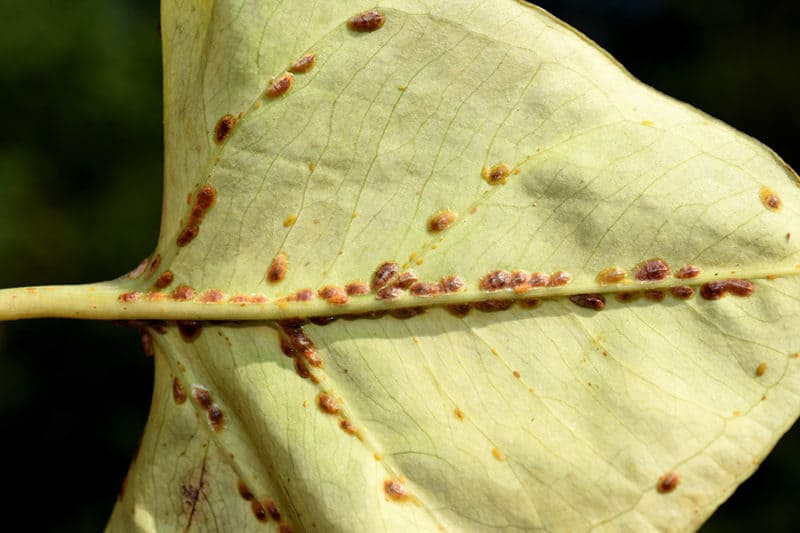
Scale insects don’t typically have wings (except for some males of certain species), so they’re not capable of flying away when targeted. That said, their little legs still allow them to scatter away and hide when they want to.
Here are a few ways to deal with these annoying, plant-killing bugs:
- Use Sticky traps. Place double-sided tape along the stems and branches of infested plants to trap bugs. You can also use this method to identify a suspected infestation.
- Relocate infected plants. If possible, especially in the case of houseplants, move infested plants away from healthy ones to prevent the insects from spreading to other plants.
- Manually remove bugs. This unpleasant remedy requires plant carers to pick off insects or dislodge them from their resting spots by manually flicking them off. Toss them into soapy water to ensure they don’t return.
- Implement alcohol swabs. Use a cotton swab dipped in alcohol to address invading insects to kill them off. This method is best for handling light infestations.
- Use chemical controls. Commercial products like neem oil or insecticidal soaps are effective methods for getting rid of scale, but won’t work on all types of scale insects.
- Prune plant material. Prune affected plant material without entirely disposing of the whole plant.
- Introduce or encourage predator insects. For outdoor plants, encouraging the presence of hungry predator bugs can help control (and prevent) scale insects from heavily infesting your garden.
- Get rid of heavily infested plants. Plants with a severe infestation should be thrown away if all other methods have been exhausted and there are no signs of improvement.
Timing is Important
When addressing a scale infestation, you must apply sprays and insecticidal soaps at the right time.
If you apply sprays when the insects are fully mature, it’s less likely to work than when you apply insecticides when insects are at their “crawling” stage.
This is the stage that describes the newly hatched nymphs, which crawl around your plant to find a spot to latch on and feed.
Don’t forget that the rapid reproduction rate of scale insects means that some treatments should be repeated to fully eradicate the insects from your garden or houseplants. Once you spot a scale problem, it’s essential to keep a close eye on your affected plants.
How to Prevent Scale
One of the easiest ways to attract scale is by accidentally bringing home infested plants. When you’re shopping at your favorite nursery in the spring, be sure to carefully inspect all areas of plants you intend to bring home.

Check on your garden plants and houseplants often. If you spot scale in the early stages of an infestation, you’ll have better luck controlling or eliminating the problem.
Ensure your plants are happy and healthy. This goes a long way in helping you prevent any kind of insect infestation, including scale. Plants that get enough light, nutrients, and water are more likely to survive an infestation, as well.
Some gardeners suggest physically washing plant foliage from time to time to prevent scale infestations. This is obviously not a feasible strategy for outdoor plants in a garden, but it’s a viable preventative step for indoor houseplants.
Houseplants collect a lot of dust, anyhow, so washing the leaves can help keep your plants clean.
